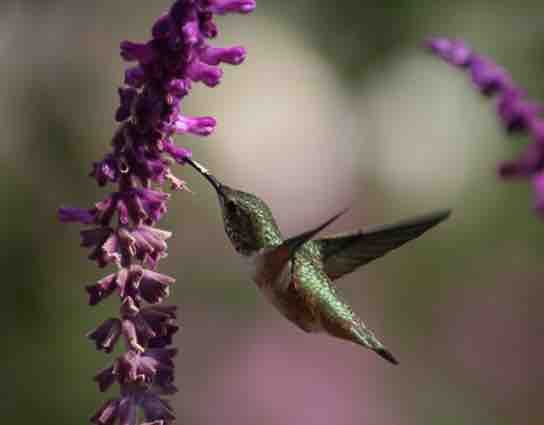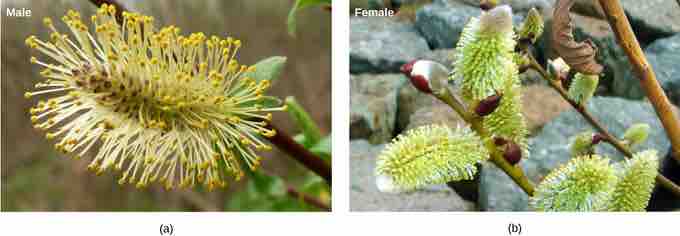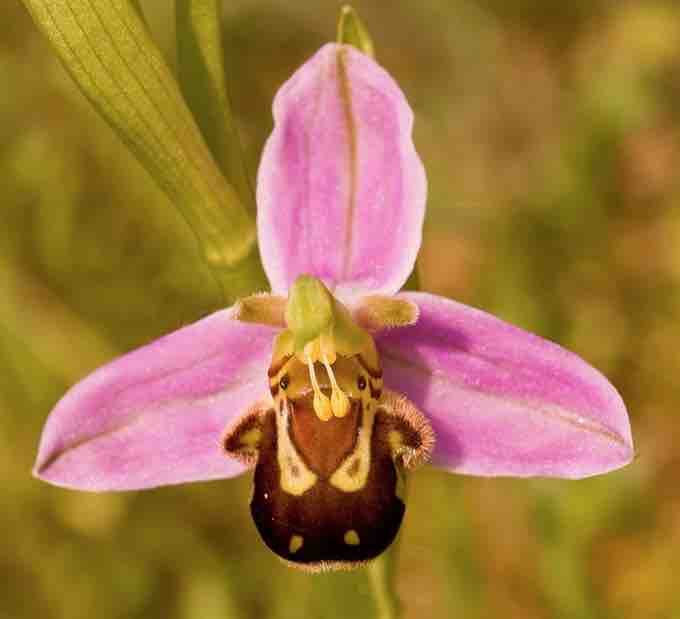Non-Insect Methods of Pollination
Plants have developed specialized adaptations to take advantage of non-insect forms of pollination. These methods include pollination by bats, birds, wind, and water.
Pollination by Bats
In the tropics and deserts, bats are often the pollinators of nocturnal flowers such as agave, guava, and morning glory. The flowers are usually large and white or pale-colored so that they can be distinguished from their dark surroundings at night. The flowers have a strong, fruity, or musky fragrance and produce large amounts of nectar. They are naturally-large and wide-mouthed to accommodate the head of the bat. As the bats seek the nectar, their faces and heads become covered with pollen, which is then transferred to the next flower.
Pollination by Birds
Many species of small birds, such as hummingbirds and sun birds, are pollinators for plants such as orchids and other wildflowers . Flowers visited by birds are usually sturdy and are oriented in a way to allow the birds to stay near the flower without getting their wings entangled in the nearby flowers. The flower typically has a curved, tubular shape, which allows access for the bird's beak. Brightly-colored, odorless flowers that are open during the day are pollinated by birds. As a bird seeks energy-rich nectar, pollen is deposited on the bird's head and neck and is then transferred to the next flower it visits. Botanists determine the range of extinct plants by collecting and identifying pollen from 200-year-old bird specimens from the same site.

Pollination by birds
Hummingbirds have adaptations that allow them to reach the nectar of certain tubular flowers, thereby, aiding them in the process of pollination.
Pollination by Wind
Most species of conifers and many angiosperms, such as grasses, maples, and oaks, are pollinated by wind. Pine cones are brown and unscented, while the flowers of wind-pollinated angiosperm species are usually green, small, may have small or no petals, and produce large amounts of pollen. Unlike the typical insect-pollinated flowers, flowers adapted to pollination by wind do not produce nectar or scent. In wind-pollinated species, the microsporangia hang out of the flower, and, as the wind blows, the lightweight pollen is carried with it . The flowers usually emerge early in the spring before the leaves so that the leaves do not block the movement of the wind. The pollen is deposited on the exposed feathery stigma of the flower.

Wind pollination
These male (a) and female (b) catkins from the goat willow tree (Salix caprea) have structures that are light and feathery to better disperse and catch the wind-blown pollen.
Pollination by Water
Some weeds, such as Australian sea grass and pond weeds, are pollinated by water. The pollen floats on water. When it comes into contact with the flower, it is deposited inside the flower.
Pollination by Deception
Orchids are highly-valued flowers, with many rare varieties. They grow in a range of specific habitats, mainly in the tropics of Asia, South America, and Central America. At least 25,000 species of orchids have been identified.
Flowers often attract pollinators with food rewards, in the form of nectar. However, some species of orchid are an exception to this standard; they have evolved different ways to attract the desired pollinators. They use a method known as food deception, in which bright colors and perfumes are offered, but no food. Anacamptis morio, commonly known as the green-winged orchid, bears bright purple flowers and emits a strong scent. The bumblebee, its main pollinator, is attracted to the flower because of the strong scent, which usually indicates food for a bee. In the process, the bee picks up the pollen to be transported to another flower.
Other orchids use sexual deception . Chiloglottis trapeziformis emits a compound that smells the same as the pheromone emitted by a female wasp to attract male wasps. The male wasp is attracted to the scent, lands on the orchid flower, and, in the process, transfers pollen. Some orchids, like the Australian hammer orchid, use scent as well as visual trickery in yet another sexual deception strategy to attract wasps. The flower of this orchid mimics the appearance of a female wasp and emits a pheromone. The male wasp tries to mate with what appears to be a female wasp, but instead picks up pollen, which it then transfers to the next counterfeit mate.

Pollination by deception in orchids
Certain orchids use food deception or sexual deception to attract pollinators. Shown here is a bee orchid (Ophrys apifera).